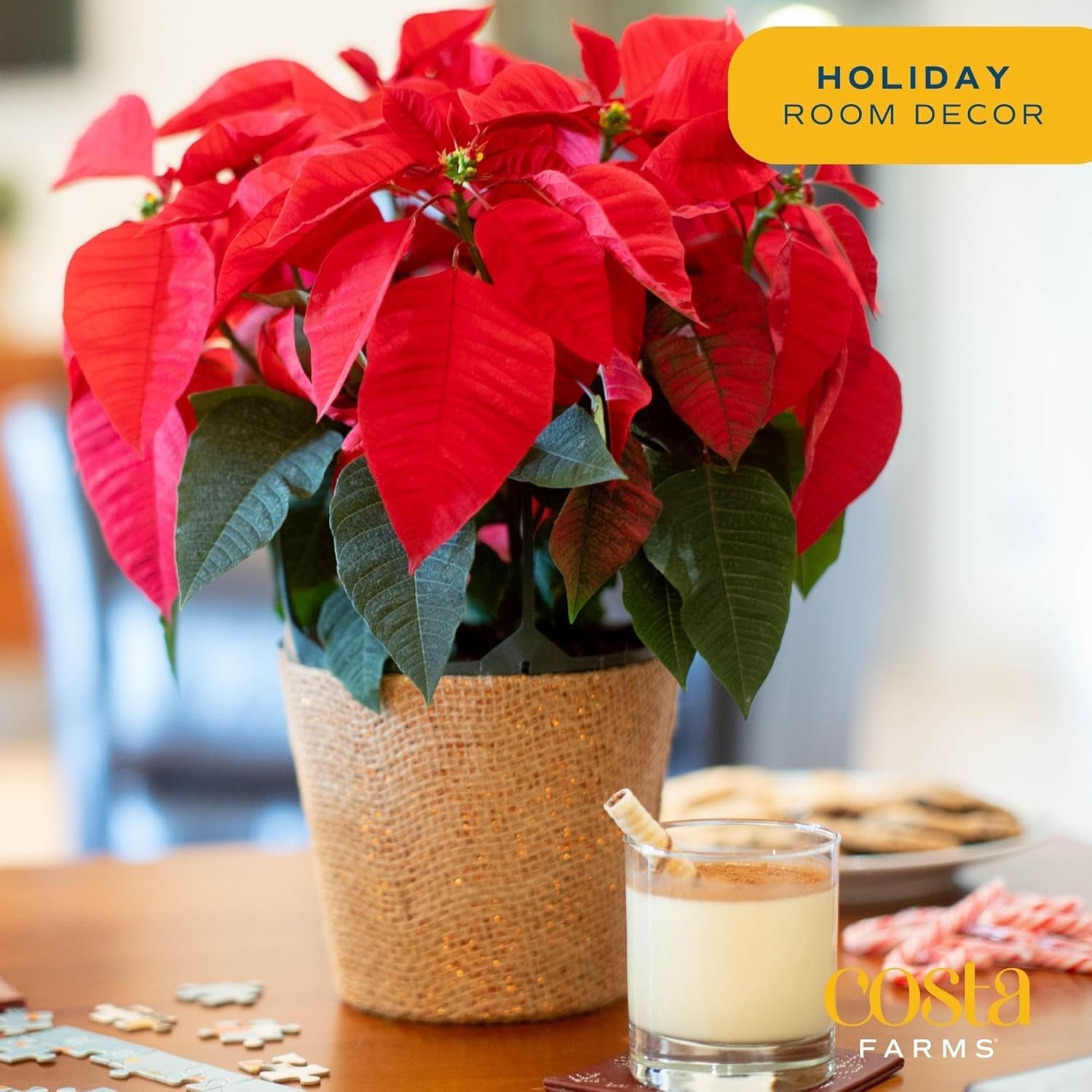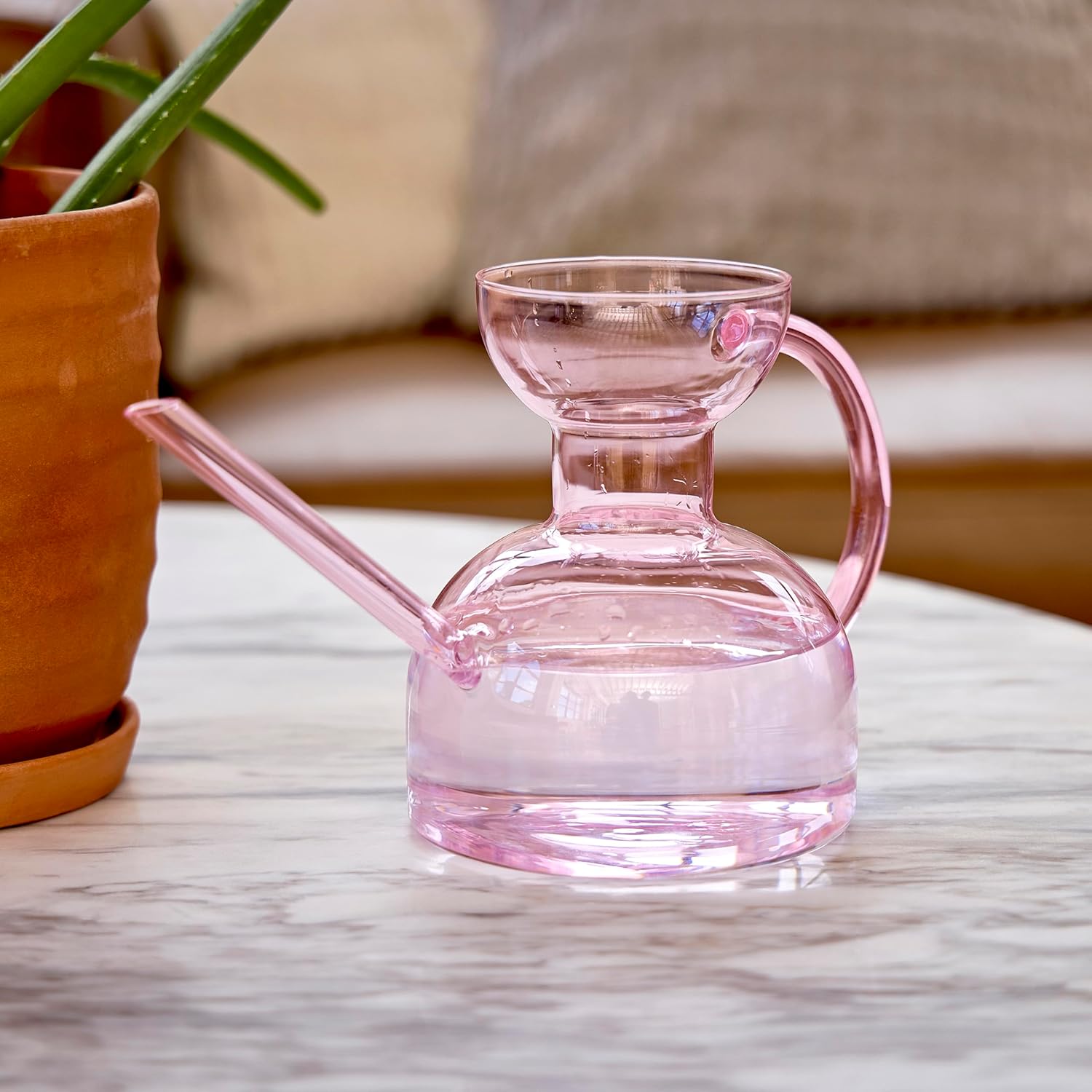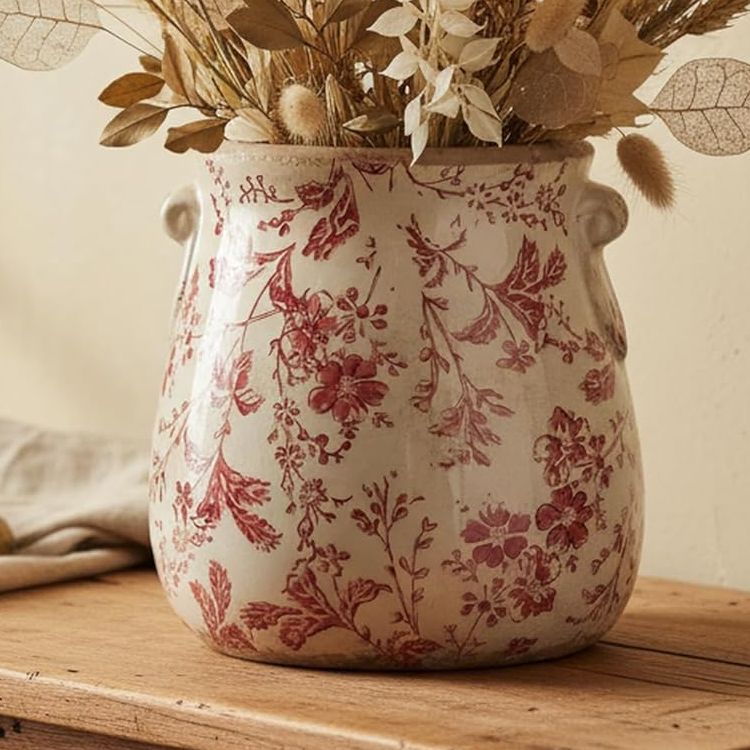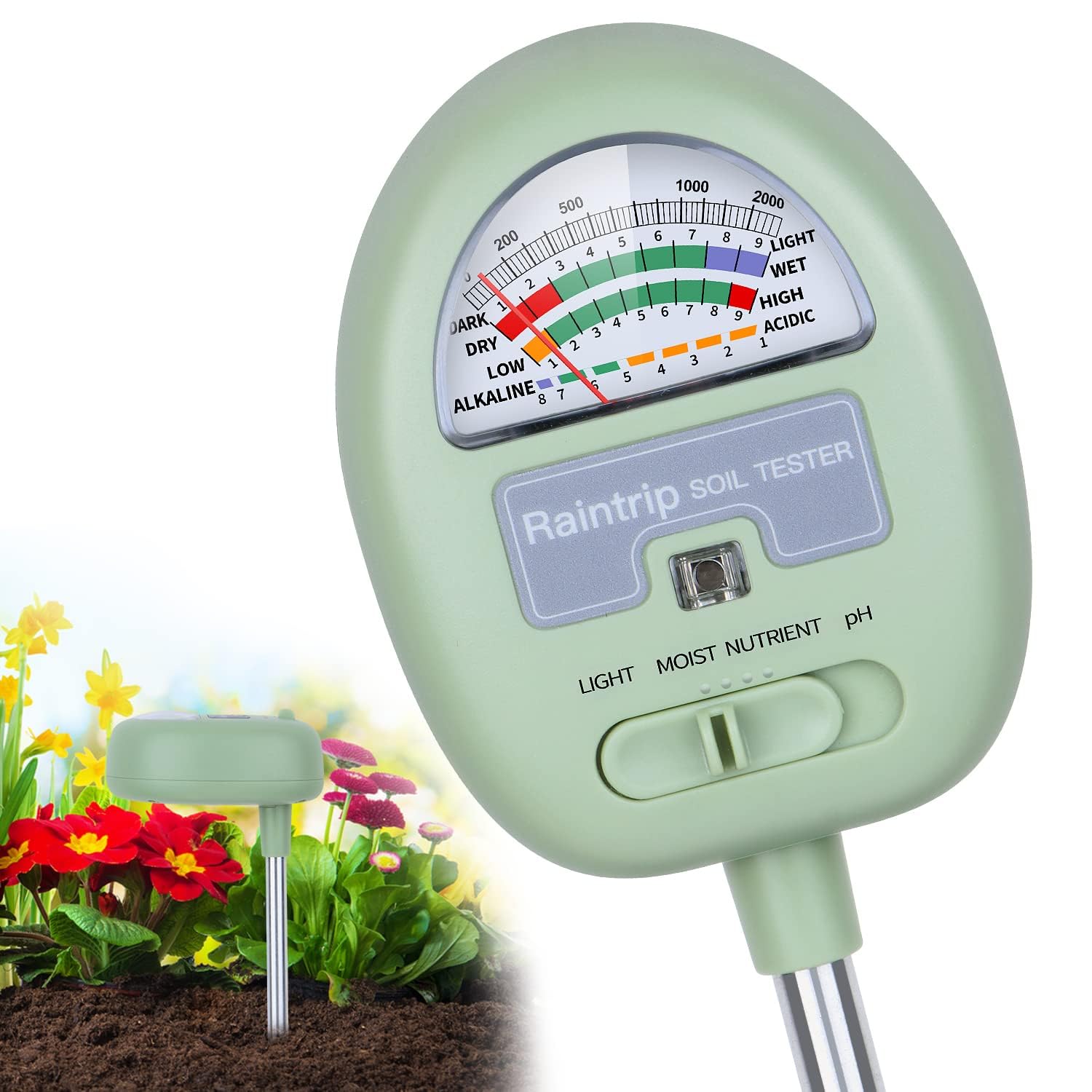The Ultimate Poinsettia Care Guide: How to Keep These Joyful Plants Thriving for the Holidays and Beyond
Plant pros reveal exactly how to care for a poinsettia all year round

Melanie Griffiths

Few plants are as instantly synonymous with the festive season as the poinsettia. With its jewel-toned bracts and glossy green foliage, this striking houseplant has become a winter staple in American homes.
Knowing how to care for a poinsettia properly is key to keeping it looking vibrant long after the holidays begin. While they are often treated as disposable decorations and Christmas plants, poinsettias are in fact long-lived tropical plants that can thrive indoors with the right care.
From watering and temperature to light levels and placement, this complete guide covers everything you need to know to keep a poinsettia healthy, colorful, and thriving throughout winter and beyond.
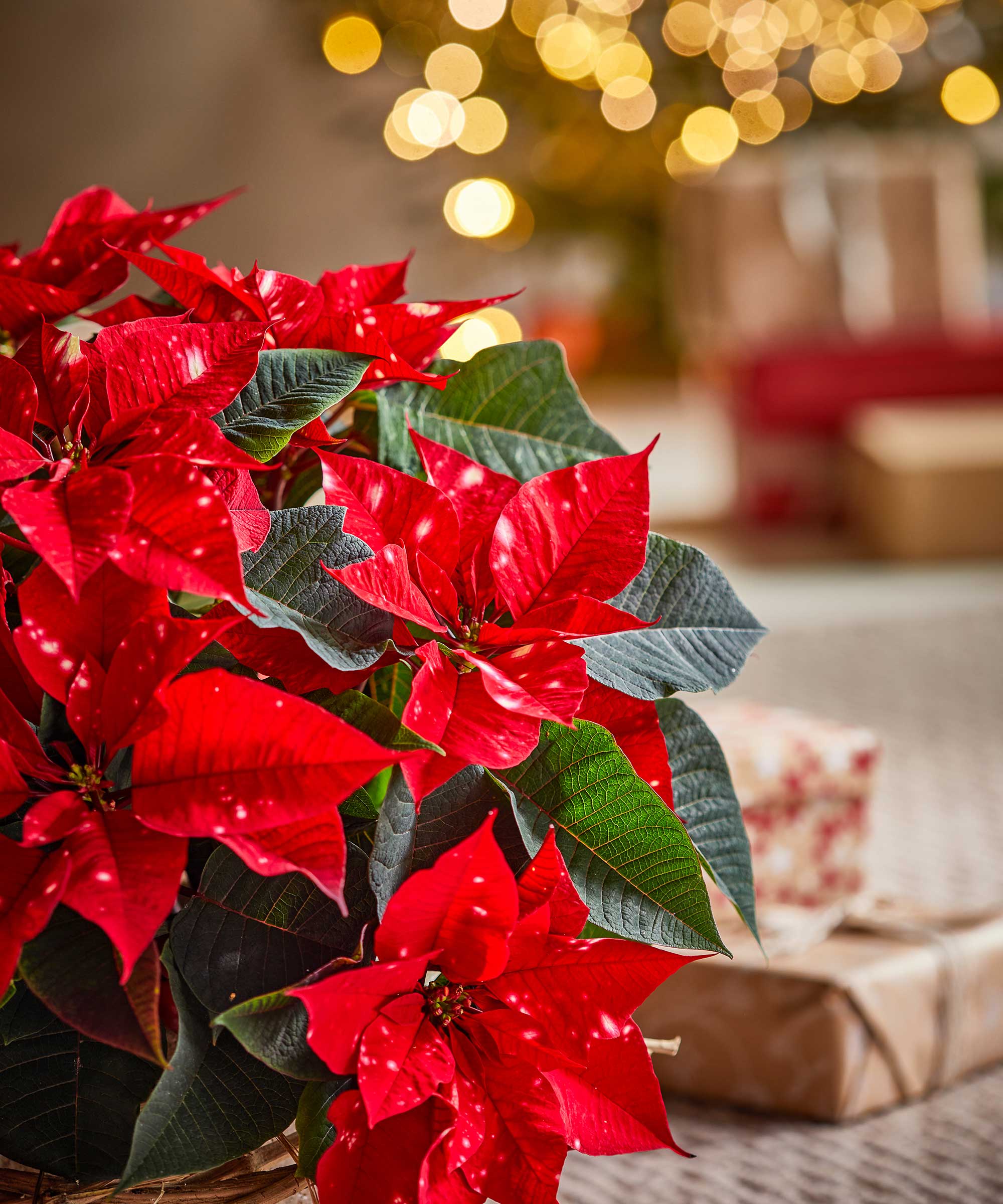
How to Keep Your Poinsettia Healthy: Expert Advice
One of the most iconic winter houseplants, the poinsettia's story stretches back far beyond modern Christmas décor.
Native to Mexico, this joyful plant was introduced to the United States in the early 19th century by botanist and diplomat Joel Roberts Poinsett, who was so captivated by the plant that it was later named in his honor. By the mid-1900s, clever cultivation and promotion had cemented its place as the definitive Christmas plant we know today.
Poinsettias do have a reputation for being tricky to maintain after the holiday season, and especially if you make any common poinsettia mistakes, but rest assured all you need is the right care advice.
Don't forget, poinsettias need a period of being placed in the dark each day for 8-10 weeks (usually from October) to in order for it to flower profusely again by Christmas.
Design expertise in your inbox – from inspiring decorating ideas and beautiful celebrity homes to practical gardening advice and shopping round-ups.
‘They can be a little challenging to care for, but with due consideration and proper poinsettia care, it is possible for them to thrive in most home environments,’ confirms Andrew Gaumond, horticulturist, botanist, and editorial director at Petal Republic.
We consulted top plant experts to find out exactly how to care for a poinsettia properly. Follow this advice and you’ll be keeping your plant alive until next Christmas, and it for many winters to come.
1. Choose a Healthy Plant

Start your poinsettia care regime before you’ve even bought it, by choosing a healthy plant from a reputable store or garden center.
A way to select a high-grade plant is to look for undamaged, dense foliage and budding flowers in-between the colored bracts (these are the upper leaves, which are often mistaken for flowers).
‘Buy your poinsettia from an indoor store, and make sure they don't display these plants near automatic doors,’ says Naomi Robinson, founder of Houseplant Authority. ‘Poinsettias don't like lower temperatures so any period exposed to this, even just the doors opening and closing every now and then, can mean that the plant won't last long.’
This poinsettia from Costa Farms and available to buy via Amazon would be a good online choice, and the festive gold pot is a bonus.
A caring seller will also have made sure the poinsettia is watered correctly – feel the compost and ensure it is neither sandy dry nor soaking wet.
2. Transport Your Poinsettia Home With Care

‘Wrap your poinsettia in paper for the journey home to protect it from drafts and temperatures below 54°F (12ºC),' says Dr. Susanne Lux, international campaign coordinator at poinsettia grower collective Stars for Europe.
'This protects it from damage that is initially invisible but can lead to premature loss of leaves after a few days,’
When you get it home, take it out of its sleeve and place the pot on a saucer. ‘Be careful with pot sleeves because they can hold too much water, which can cause the plant to die,’ says Gail Pabst from the National Garden Bureau.
3. Ensure Consistent Temperature

When it comes to knowing where to place a poinsettia, these plants are particularly sensitive to temperature fluctuations, which is why consistency is just as important as hitting the right range.
Sudden changes, such as being moved from a warm living room to a chilly hallway, or placed near an exterior door that’s frequently opened, can quickly stress the plant.
Drafts, cold windowsills, and heat sources like radiators, fireplaces, and air vents can all cause leaf drop or premature fading of the colorful bracts.
For best results, keep poinsettias in a stable spot where night and daytime temperatures remain steady
‘Keep the plants at a temperature of between 59-72°F (15-22ºC),’ says Susanne Lux.
Naomi Robinson adds: ‘Poinsettias don't generally like direct sunlight, although this is less of an issue during winter, so it's fine to keep your plant near a window (ideally south-facing) during the Christmas period.’
‘Just make sure you move it away from that position as the warmer months approach to avoid its leaves burning.’
4. Only Water Poinsettias When the Soil is Noticeably Dry
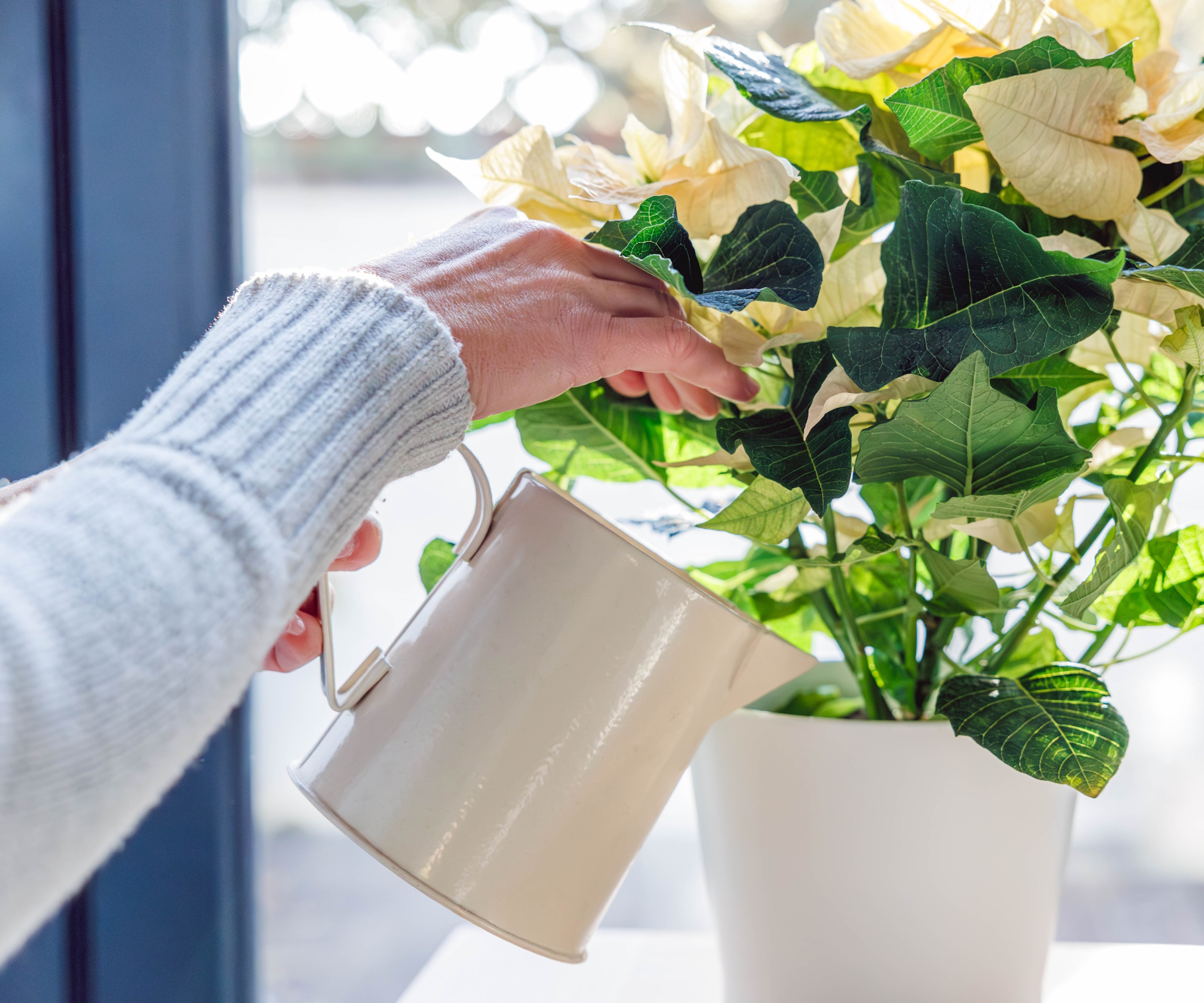
While technique and water temperature are crucial, timing is just as important when watering a poinsettia. Rather than sticking to a strict schedule, it’s best to check the compost regularly and water only when the top inch feels dry to the touch.
‘Overwatering is the most common mistake with poinsettias – and it's important to let the water drain,’ says Gail Pabst.
Knowing how often to water a poinsettia will varies depending on the temperature, location, and the size of both the plant and its pot. ‘For a pot with a diameter of 5 inches, give it no more than a small glass of water,’ advises Susanne Lux. ‘This prevents large pores in the soil from clogging up and waterlogging.'
Mini poinsettias should not be given more than one shot glass of water. Excess water that is still in the planter after ten minutes should be removed as this can lead to overwatering. ‘If in doubt, it’s better to keep these plants a little more dry than moist and to water them little and often, rather than rarely but in great quantity,’ adds Susanne.
Only water poinsettias when the soil is noticeably dry, which can range from every day to every three days. Pay extra attention to smaller pots as they dry out faster – mini poinsettias, especially, will most likely need watering daily. A soil moisture meter, such as this one from Amazon, will really help to know for sure when your poinsettia needs its next drink.
It’s also worth knowing the early signs of watering issues. Drooping or yellowing leaves can indicate both under- and overwatering, while sudden leaf drop is often a sign that the roots have been exposed to cold, waterlogged compost. Adjusting watering habits promptly can often reverse these issues and help the plant recover.

Gail is a passionate horticulturist with over 25 years of experience in the industry. She is an avid home gardener too and loves to try out the newest varieties and techniques. Gail's work with the National Garden Bureau and the All-America Selection has helped her to continue their mission of inspiring and teaching gardening with others.
5. Hold Off on the Feeding
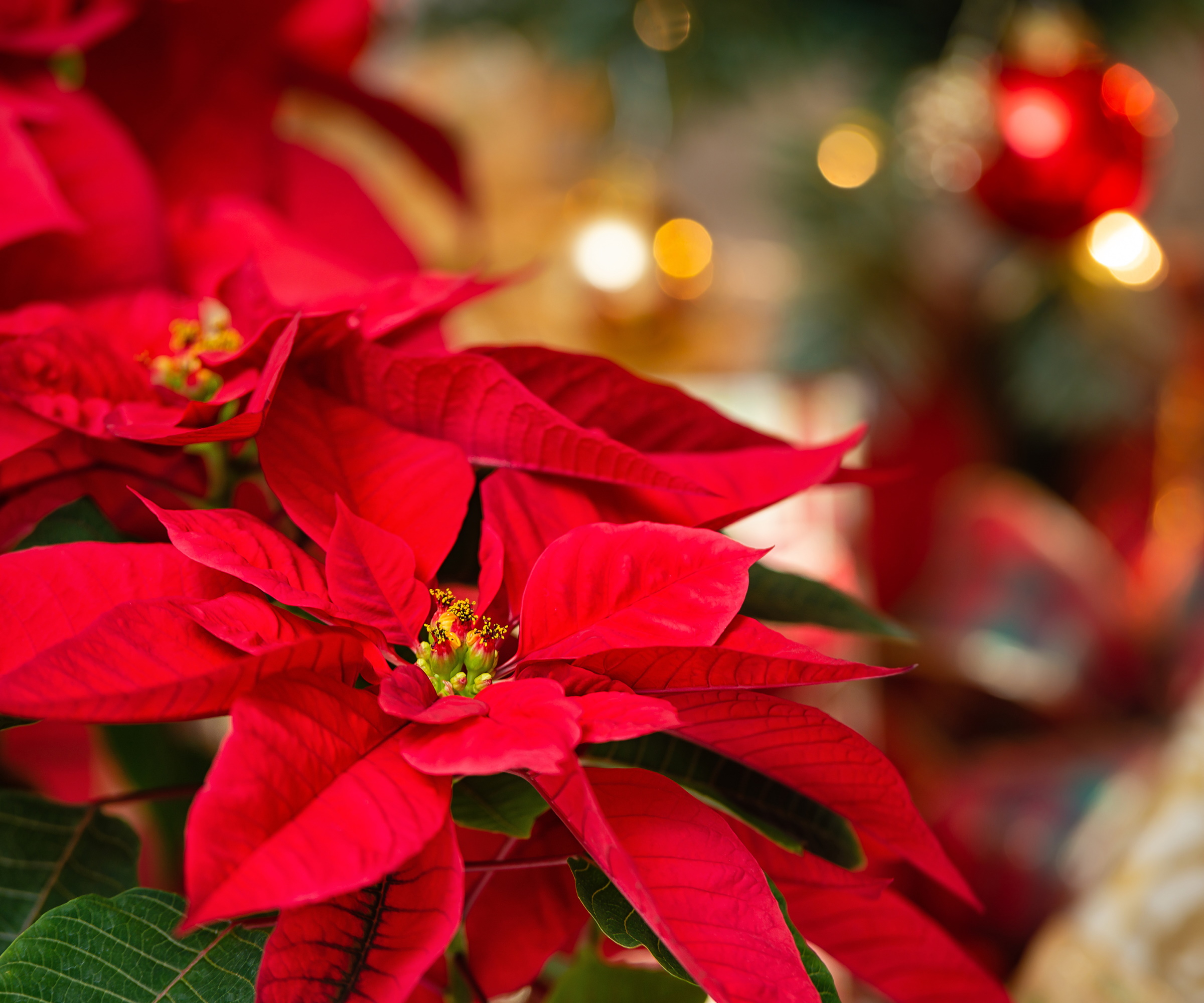
While you would typically fertilize a plant when it's in bloom this is a big no-no when it comes to poinsettias in the winter.
Fertilisation is most beneficial after the bracts begin to fade, when the plant can use nutrients to support new leaf and root growth in preparation for the next season.
‘Never fertilize a poinsettia in full bloom,’ adds Andrew Gaumond, horticulturist, botanist, and editorial director at Petal Republic.
‘These plants are generally light feeders and only really need a nutrient boost once or twice in spring and summer with a balanced water-soluble houseplant feed.’
Shop Our Poinsettia Care Edit
FAQs
What is the Most Popular Poinsettia Color?
Red is the most popular poinsettia color, however, the bracts actually come in a many more shades and even patterns, meaning there’s a breed to suit any taste or style. Shapes, too, can differ from pointed or jagged to rounded or crinkled.
Some of the most popular non-traditional poinsettia colors are:
- White
- Cream
- Salmon
- Magenta
- Apricot
- Lemon
There are also lots of interesting variations, like marbled or mottled patterns which feature multiple colors – we love this white and pink poinsettia.
Can You Put Poinsettias in a Vase?
Yes, you can put cut poinsettias in a vase. However, this is not as simple and just cutting them and dropping them into a vase of water.
If you’re using cut poinsettias in a vase, cut the bracts, dip the cut end in warm, around 140°F (60ºC), water for a few seconds, then immediately in cold water. Once arranged, make sure to replace with fresh water every few days. With the right care, they will last around two weeks in the vase.
If you don't love the ruby red blooms of the classic poinsettias for Christmas, they are also available in a range of colors including white, lemon, and pink.
Why not use different colors to make a poinsettia wreath? Or, if you want inspiration for poinsettia alternatives, you'll find them in our guide.

Rachel is a gardening editor, floral designer, flower grower and gardener. Her journalism career began on Country Living magazine, sparking a love of container gardening and wild planting. After several years as editor of floral art magazine The Flower Arranger, Rachel became a floral designer and stylist, before joining Homes & Gardens in 2023. She writes and presents the brand's weekly gardening and floristry social series Petals & Roots. An expert in cut flowers, she is particularly interested in sustainable gardening methods and growing flowers and herbs for wellbeing. Last summer, she was invited to Singapore to learn about the nation state's ambitious plan to create a city in nature, discovering a world of tropical planting and visionary urban horticulture.
- Melanie GriffithsSenior Editor of Gardening Know How
